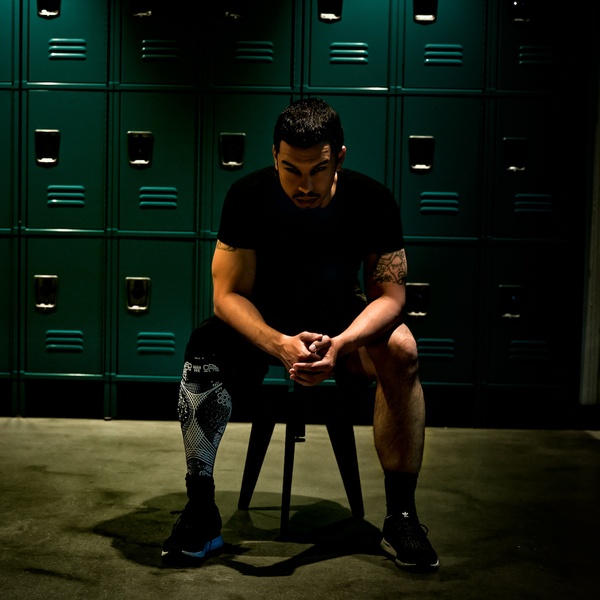Each year, more than a million amputations occur worldwide. A staggering number at first glance, but with a population of 7.8 billion humans, the amputee community is minuscule by comparison.
Statistically speaking, there’s a higher chance of Godzilla ripping off your roof and kicking over your son’s pillow fort than there is of an able-bodied person becoming dismembered.
This makes us the unicorns of the globe, though losing a limb may feel less like a mythical experience and more like a gauntlet with layered challenges, such as:
1. Recovery Time
Time heals all wounds.
According to the amputee coalition, that healing can take upwards of two to six months before the remaining portion of your limb, also known as the “stump”, is ready to wear a prosthesis.
Now, I’m not a quantum physicist, but based on my experience watching Star Trek, the effects of recovery can be similar to the time dilation of a black hole. Each passing day can feel like an eternity and cause psychological distress.
Having a support system is vital for your mental health at this time. Unfortunately, even the savviest caregivers won’t be able to help much with:
2. Phantom Symptoms
While recovering from my surgery, I experienced a relentless itch along the top side of my right foot.
My brain hadn’t yet registered that ol’ righty had moved on to that plush Nike in the sky. Instead, it believed my foot was still firmly attached and had just been bitten by a prehistoric mosquito.
The severe itch persisted, regardless of how often I clawed at the air below my stump. Apparently, a phantom scratch can’t remedy a phantom itch.
I also experienced frequent jolts of phantom pain in that same missing foot. Thankfully, both sensations waned with time, at which point I graduated to the next challenge:
3. An Unfit Prosthesis
I fully expected to be kicking in steel doors and doing parachute sprints with my new bionic leg. My prosthetist, however, mostly treated geriatric patients with the activity level of a retired Nordstrom mannequin.
The thought never occurred to me that I should find another practitioner. Consequently, this mismatch produced a lemon of a leg that I had trouble walking with.
A great fitting prosthesis can lead to Paralympic gold medal victories, whereas a poor fit can lead to injuries and mounting frustration.
Even when paired with the right practitioner, new amputees have yet to experience the hand-in-glove feeling of a perfectly molded limb. So they lack the frame of reference to know whether their first prosthesis is a good fit.
Additionally, their stumps can drastically fluctuate in size and shape during the initial post-op year.
Imagine buying a pair of loafers that fit perfectly when you purchased them, but after a couple of months, your foot shrinks 3 sizes. Now you’ve got a pair of baby feet knocking around in your clown shoes.
Given these challenges and the general inexperience of new amputees, many will simply accept the first replacement limb they’re given. But it’s common for a new prosthesis to need refinements before a tailored fit is achieved.
Pro tip: don’t be shy about requesting adjustments or, if necessary, finding a new prosthetist.
Under no circumstance, even if a bazooka were firmly pressed against your forehead by a trigger happy practitioner, do you accept a new limb unless it’s comfortable and fully functional.
Because if the glove doesn’t fit…you must acquit! you will experience:
4. Skin Blisters
Almost inevitably, extreme changes to the stump will disrupt the fit of your first prosthesis and lead to blistering. This is especially true for lower limb amputees.
Lax hygiene is another culprit.
Blisters are painful, can lead to infection, and further limit mobility until the wound heals, a process that can take longer than a turtle race. Fortunately, skin sores can be mitigated by:
- Cleaning your gel liner daily to keep it free of bacteria
- Politely declining Shrek’s invitation to splash around in the swamp, and bathing regularly instead
- Managing changes to the size of your stump by wearing prosthetic socks, which fills the space between a shrunken limb and a loose-fitting prosthesis
By sunset, I’ve usually got on enough socks to eat a washing machine — retribution for all the fallen foot soldiers who were swallowed by the spin cycle!
Yes, I’m a formidable appliance-slaying badass now, but the journey to becoming Braveheart was daunting and frequently led to:
5. Feeling Overwhelmed
Limb loss can break even the most resilient person, particularly those who were amputated involuntarily, because of a traumatic event like a motorcycle accident or a chronic health condition like diabetes.
Their lives were upended, forcing them to confront unfathomable physical limitations and body dysmorphia, while grieving the loss of an identity that can never be reclaimed — that of an “able-bodied” person who didn’t rely on pirate technology to sail the seven seas.
Adapting to life with an artificial limb isn’t as effortless as Rihanna’s runway models make it seem.
Just the act of getting out of bed in the morning becomes an annoying multi-step process for lower extremity amputees. And tying a shoe with one arm requires a level of dexterity usually reserved for bomb technicians.
Thankfully, a pair of untied Skechers won’t trigger a subway explosion. But coping with unexpected limb loss can trigger a cascade of overwhelming emotions — depression, anger, shame, anxiety, and everything between.
It’s especially common to feel isolated because friends and family can’t truly relate to the plight of an amputee, despite their best attempts at being supportive. But rest assured, you’re not alone.
If you haven’t yet found your tribe of brave limb loss warriors, we’d love for you to join our community!
Your turn: what challenges are you currently facing as an amputee?

